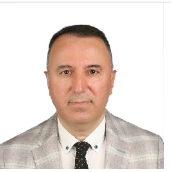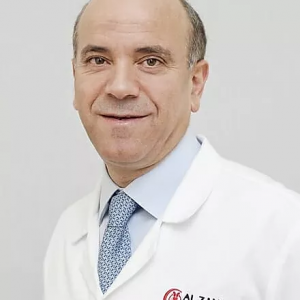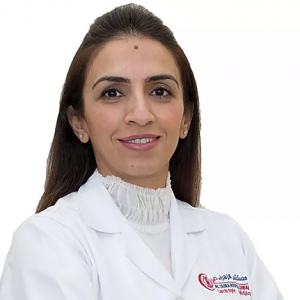Laryngeal and Hypopharyngeal Cancer Treatment
To detect Laryngeal and Hypopharyngeal Cancer Treatment, many tests are there. These include – CT Scan (CAT scan), Physical exam of the throat and neck, Biopsy, Laryngoscopy, and Endoscopy. … Read More
Top Doctors For Laryngeal and Hypopharyngeal Cancer Treatment Treatments
Top Hospitals For Laryngeal and Hypopharyngeal Cancer Treatment Treatments
Laryngeal and Hypopharyngeal Cancer Treatment
- Radiation therapy,
- Surgery, and
- Systemic therapy (chemotherapy, immunotherapy, and targeted therapy).
- Partial laryngectomy: That is, only a part of the larynx is removed. This helps preserve the natural voice of the patient. This surgery could be of four (4) techniques
- Supraglottic laryngectomy: Removal of the area above the vocal folds. This may also involve the removal of part of the hypopharynx along with cancer. In such a case, this procedure is known as Partial Pharyngectomy.
- Cordectomy: Removal of the vocal fold.
- Vertical hemilaryngectomy: Removing one side of the larynx.
- Supracricoid partial laryngectomy: Removing the vocal folds and the surrounding area.
- Total laryngectomy: Removal of the entire larynx.
- Laryngopharyngectomy: The removal of the entire larynx, as well as the vocal folds and part, or all, of the pharynx.
- Neck dissection: If cancer spreads to the lymph nodes in the neck, a neck dissection is carried out. Neck dissection is the surgical removal of the lymph nodes in the neck. Neck dissections is of several types – partial neck dissection, modified neck dissection, and selective neck dissection.
- Laser surgery: This uses light beams to remove small tumours in the larynx. It can also be used to perform a partial laryngectomy. This is, however, still a relatively new treatment approach.
- Chemotherapy.
- Targeted therapy.
- Immunotherapy.
- Redness or skin irritation of the treated area.
- Dry mouth or thickened saliva due to damage of the salivary gland.
- Nausea and fatigue.
- Bone pain.
- Mouth sore and/or sore throat.
- Pain or difficulty swallowing.
- Hoarseness or changes to the voice.
- Loss of appetite, as a result of change in the sense of taste.
- Hearing loss, as a result of build-up of fluid in the middle ear or nerve damage.
- Build-up of earwax, which dries out due to effect of the radiation therapy’s on the ear canal.
- Scarring (fibrosis).
- Difficulty in breathing, due to swelling in the mouth and tongue.
- Permanent loss of voice or speech impairment.
- Lymphedema.
- Facial disfigurement.
- Numbness in parts of the neck and throat.
- Less mobility in the shoulder and neck area.
Symptoms
• Hoarseness or other voice changes that do not go away within 2 weeks.
• An enlarged lymph node or lump in the neck.
• Airway obstruction, difficulty breathing, and noisy breathing.
• Persistent sore throat or a feeling that something is caught in the throat.
• Difficulty swallowing that does not go away.
• Ear pain.
Causes
The following are a few causes which may increase the onset of this type of cancer.
• Smoking or use of Tobacco
• Use of excessive Alcohol
• Exposure to asbestos, wood dust, paint fumes, and certain chemicals may increase a person's risk of developing laryngeal and hypopharyngeal cancer.
• Poor nutrition.
• A diet low in vitamins A and E can raise a person's risk of laryngeal and hypopharyngeal cancer.
FAQ
What is laryngeal and hypopharyngeal cancer?
Laryngeal cancer is a form of cancer that develops in the tissue of the larynx. While hypopharyngeal cancer is the growth of cancerous cells in the hypopharynx (the area where the larynx and oesophagus meet).
What are the various laryngeal and hypopharyngeal cancer symptoms?
The following are possible laryngeal and hypopharyngeal cancer symptoms
- Swollen lymph nodes in the neck.
- Cough.
- Sore throat.
- Having the feeling of a lump in the throat.
- Hoarseness or voice change.
- Difficult or painful swallowing.
- Frequent choking on food.
- Breathing difficulty.
- Noisy breathing.
- Ear pain.
- Lump in the neck.
- Sudden weight loss.
- Bad breath.
What causes laryngeal and hypopharyngeal cancer?
Laryngeal and hypopharyngeal cancer is due to genetic mutations. These mutations lead to the uncontrollable growth of cells, which continue to live after healthy cells would normally die. The accumulating cells lead to the formation of tumour in the larynx and pharynx.
What are the risk factors of laryngeal and hypopharyngeal cancer?
The exact causes of the mutation that leads to laryngeal and hypopharyngeal cancer are not known. But certain factors that may increase the risk have been identified.
- Tobacco use; chewing and smoking.
- Alcohol abuse.
- Poor nutrition.
- Sex: Men are at an increased risk than women
- Age: People older than 65 are at more risk.
- Race: It is more common in African-Americans than in other races.
- Workplace exposures to toxic substances: Such as wood dust, paint fumes, asbestos, and some other chemicals appear to increase the risk for laryngeal cancer.
- Gastroesophageal reflux disease (GERD).
- Viral infections; such as human papillomavirus (HPV) and Epstein-Barr virus increase the risk of laryngeal and hypopharyngeal cancer.
Are there any lifestyle and home remedies to laryngeal and hypopharyngeal cancer?
- Quit smoking and alcohol consumption.
- Eat healthy and well.
- Wear protective clothing if you work where you are exposed to toxic substances.
- Consume more fruits and vegetables.
Are there any coping and support tips for laryngeal and hypopharyngeal cancer?
- Learn enough about laryngeal and hypopharyngeal cancer. This will help you with decision making.
- Find someone to talk to and share your feelings.
- Take care of yourself during treatment.
































































































